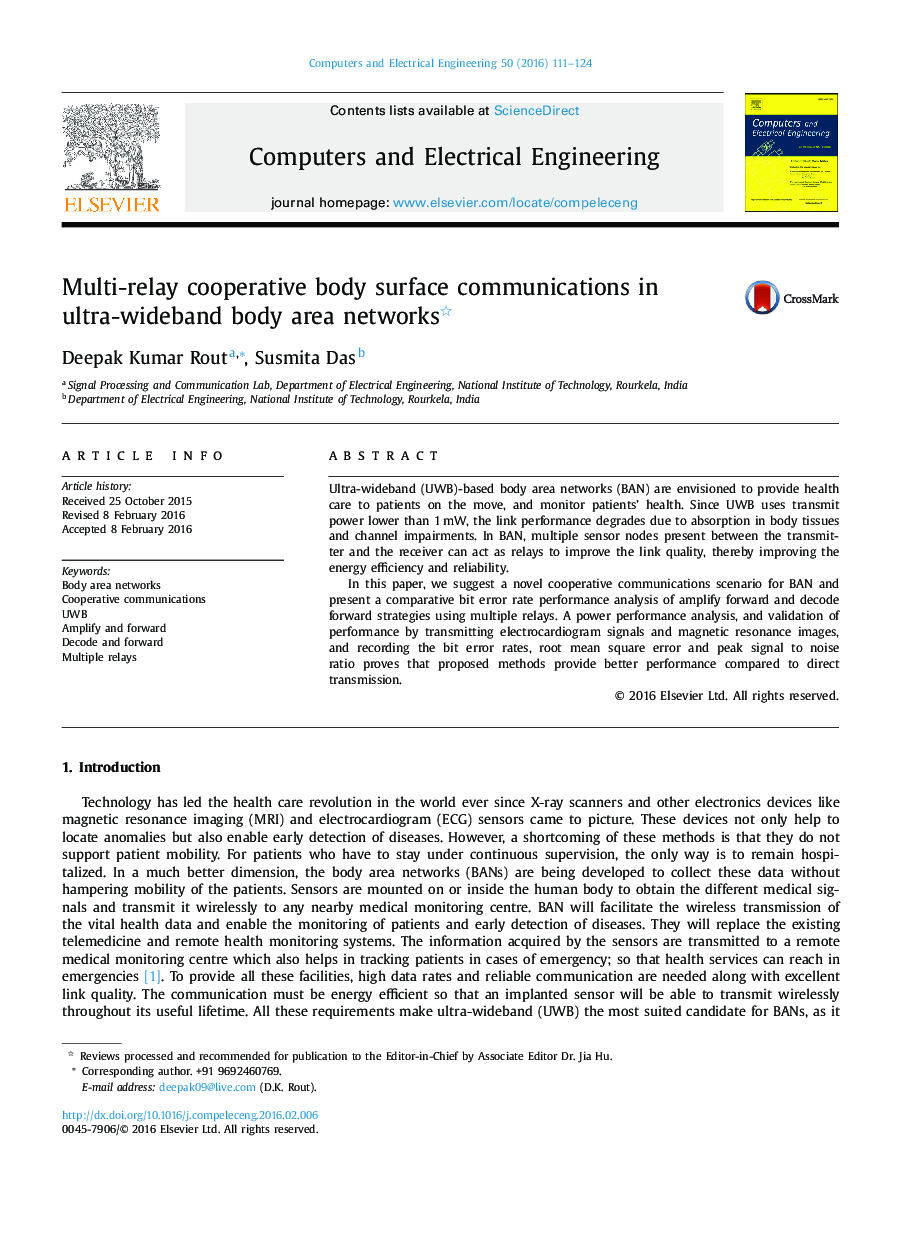| Article ID | Journal | Published Year | Pages | File Type |
|---|---|---|---|---|
| 453934 | Computers & Electrical Engineering | 2016 | 14 Pages |
•Implementation of cooperative communications on body area networks.•Analysis of multi-relay amplify and forward (AF), and Decode and Forward (DF) relaying techniques.•Analytical as well as simulation based analysis of the bit error rate performance.•Validation of performance in body area networks by transmission of magnetic resonance images and electrocardiogram signals and computing the peak signal to noise ratio and root mean square error.
Ultra-wideband (UWB)-based body area networks (BAN) are envisioned to provide health care to patients on the move, and monitor patients’ health. Since UWB uses transmit power lower than 1 mW, the link performance degrades due to absorption in body tissues and channel impairments. In BAN, multiple sensor nodes present between the transmitter and the receiver can act as relays to improve the link quality, thereby improving the energy efficiency and reliability.In this paper, we suggest a novel cooperative communications scenario for BAN and present a comparative bit error rate performance analysis of amplify forward and decode forward strategies using multiple relays. A power performance analysis, and validation of performance by transmitting electrocardiogram signals and magnetic resonance images, and recording the bit error rates, root mean square error and peak signal to noise ratio proves that proposed methods provide better performance compared to direct transmission.
Graphical abstract Figure optionsDownload full-size imageDownload as PowerPoint slide
